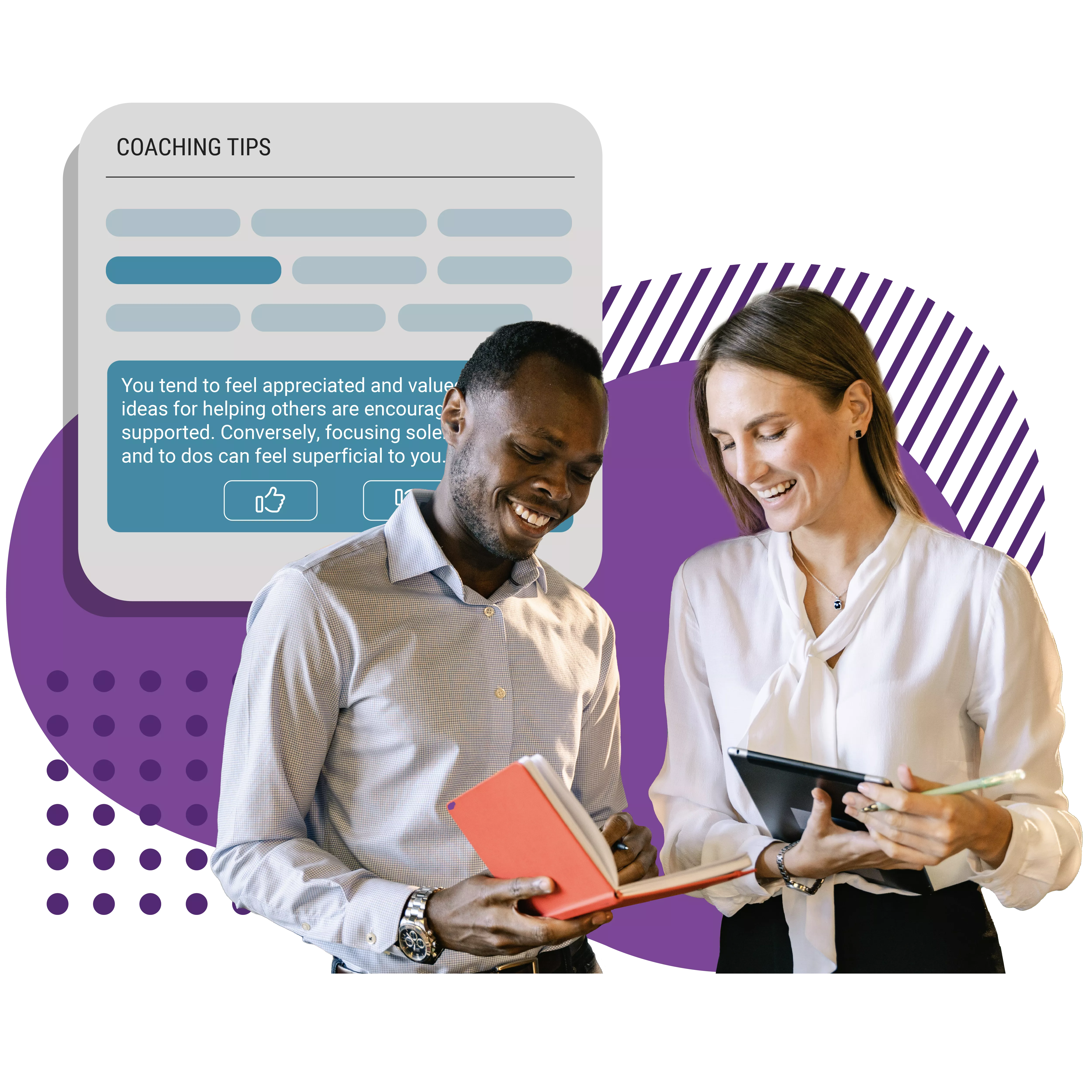In an era where the workforce landscape is rapidly shifting, the essence of the modern workplace is no longer solely defined by the tasks we perform or the titles we hold. More than ever, our experiences define it, the connections we forge, and the respect and voice we’re granted within our organizations.
The transformation we’re witnessing is not only about technological advancements or new business models. It’s about the people—their feelings, aspirations, and the environments where they spend most of their waking hours. And whether their organizations realize the impact of employee listening efforts.
While statistics paint a vivid picture of job turnover, the reasons behind it, and how to reduce its impact, they only scratch the surface. Behind every number is a narrative of an individual seeking more than just a paycheck—a quest for respect, inclusivity, and a meaningful role within their organization.
The age-old adage, “People don’t leave jobs, they leave managers,” has never been more pertinent. But this sentiment is evolving. Today, it’s not just about the manager—it’s about the entire workplace ecosystem.An ecosystem where employee engagement strategy and experience are not mere buzzwords but fundamental building blocks of a successful and sustainable business.
It’s a time when organizations are called to do more than provide jobs. They are entrusted with crafting experiences and, more importantly, genuinely listening to their most valuable asset—their employees.
As we delve deeper into the essence of employee listening, we’ll uncover its profound significance in shaping this new era of work and why it’s more critical than ever for organizations to hear, actively respond, and adapt.
KEY TAKEAWAYS
1. The Depth of Employee Listening Matters: Beyond merely collecting feedback, true employee listening involves intentionally understanding and acting on employee sentiments.
2. Understanding What Employees Value Is Imperative: Today’s employees seek more than just a paycheck; they value respect and a sense of belonging. Organizations that listen effectively benefit from higher retention rates, greater productivity, and a stronger brand reputation.
3. Strategic Listening Is Ongoing: Successful employee listening isn’t about one-off surveys. It demands a systematic approach involving real-time feedback mechanisms, followed by demonstrable actions.
4. Tailor Your Strategy For Your Organizational Needs: While the importance of listening is universal, the methods must be personalized to fit an organization’s unique culture and objectives.
5. The Leadership’s Role Is Paramount: For any listening initiative to be successful, leaders need to be engaged, responsive, and self-aware.

Understanding Employee Listening
What Is Employee Listening?
Employee listening in a conscious and intentional effort to capture and respond to employee feedback regularly. This commitment goes beyond merely deploying surveys or periodic feedback sessions. Because a survey, no matter how comprehensive, is only as valuable as the actionable insights derived from it and meaningful action to follow up in response to them.
The Disconnect in Current Workplaces:
A silent disconnect often festers within modern workplaces amid the bustling hallways and busy schedules. Recent statistics are alarming—The Pew Research Center highlighted that a staggering 57% of individuals who resigned from their roles cited feelings of disrespect as their primary reason.
The Workforce Institute’s global survey 2021 sheds further light on this issue, revealing that 86% of employees believe their concerns and voices are not heard fairly or equally in their workplaces.
Implications of Neglecting Your Employee’s Voice:
Ignoring the employee voice doesn’t just result in attrition or dissatisfaction—it breeds an environment where innovation is stifled, morale is consistently low, and the organization’s growth is stunted. In such a climate, not only does talent drain become a recurrent issue, but the fabric of the organization’s culture begins to erode. When employees don’t feel valued or heard, they often retreat into shells of minimal effort, contributing only what’s necessary.
The ripple effects are far-reaching, from burnout to deteriorating customer service. And in an era where brand reputation is intricately linked with employee advocacy, this neglect can significantly impact an organization’s external image and customer trust.
The Imperative for Employee Listening in Today’s Age
A. Emotional and Practical Factors
The Shift from Paycheck-Driven Jobs to the Quest for Respect and Meaningful Work
There was once a time when most of the workforce clocked in and out, primarily motivated by the prospect of a monthly salary. While remuneration remains critical, today’s employees, influenced by socio-cultural shifts and increasing global connectivity, crave more than just monetary rewards. They seek respect, inclusivity, and the chance to contribute to a meaningful purpose. Platforms like LinkedIn and various podcasts often showcase stories of professionals transitioning from high-paying roles to ones that align better with their values and aspirations. Such narratives underscore the magnitude of this shift in employee expectations.
The High Costs of Turnover and the Financial Imperative to Listen
Turnover is not just an HR term; it’s a significant business concern. Beyond the direct costs of hiring and onboarding, there’s a loss of institutional knowledge, a potential decline in team morale, and disruption to project timelines. All these factors translate to dollars. In today’s era, with platforms amplifying employee perceptions and experiences, organizations cannot simply replace employees; they must retain them. An essential step toward retention? Listening. It’s no longer just about HR leaders understanding employee needs; it’s about business leaders realizing that listening directly impacts the bottom line.
B. Call to Action
Highlighting the Responsibility of Organizations to Act and Bridge the Gap
The data speaks clearly: many employees feel their voices are stifled or unheard. In an age where transparency is highly valued and platforms like Glassdoor expose organizational cultures, it’s more critical than ever for organizations to address this disconnect.
The call isn’t merely for annual engagement surveys or one-off focus groups. It’s a call for continuous employee listening strategies embedded in the fabric of the employee life cycle. It’s about making feedback part of decision-making processes, benchmarking against best practices, and ensuring that action plans derived from feedback are effectively communicated and implemented. Organizations, stakeholders, and business leaders must realize that effective employee listening isn’t just an HR initiative—it’s a business imperative.

Free Playbook For Creating An Engaging Employee Experience even During Challenging Times
- What The Future Workplace Looks Like
- How To Activate Emotional Intelligence Within Your Team
- Factors Of Employee Motivation
- Strategies For Employee Engagement
- A Hybrid Work Model For Collaboration, Flexibility, & Fulfillment
- The Power Of Coaching In The Workplace
- How To Reduce The Impact Of Labour Turnover

Constructing an Effective Employee Listening Strategy
In the labyrinth of organizational growth and sustainability, the employee’s voice emerges as a guiding beacon. It’s not just about what employees say but how organizations interpret and act upon this feedback.
Crafting a robust employee listening strategy is more than just a nod to modern HR practices; it’s an acknowledgment of the immense value that employees bring to the table, not just in labor but also insights, perspectives, and innovative ideas.
In an age dominated by digital transformation and rapidly evolving work paradigms, understanding and implementing effective listening strategies can mean the difference between a thriving organization and one merely surviving.
As we delve into this section, we’ll explore the pivotal components of such a strategy, looking beyond traditional approaches and emphasizing the importance of action, transparency, and continuous evolution.
A. Move Beyond the Annual Survey
Continuous Listening Tools:
Once the cornerstone of employee feedback, the annual survey is no longer enough. In an era of immediacy, tools like pulse surveys, one-on-one meetings, engagement surveys, and performance conversations have become paramount. These instruments allow organizations to tap into the real-time sentiments of their employees, offering insights that can shape strategies on-the-fly.
The Role of Real-Time Feedback:
A constant stream of feedback is invaluable to inspiring collaboration in the workplace. It can accurately reflect workplace sentiments and enables organizations to act quickly, preventing minor concerns from snowballing into major organizational issues.
B. Transform Feedback Into Action
Importance of Ownership, Analysis, and Actioning of Feedback
Gathering feedback is only half the battle. The true challenge lies in its analysis and subsequent action. Organizations must have transparent systems and dedicated teams to collect and act upon feedback.
The Critical Aspect of Showing Employees Their Feedback Matters
Employees need to see tangible outcomes from the feedback they provide. This validates their concerns and encourages further participation in feedback loops, leading to a more engaged and invested workforce.
C. Measure The Reporting and Practice Accountability
Transparency in Results and Initiatives
Openness is key. Employees should be privy to what their feedback has led to – what changes are being implemented, what concerns are being addressed, and which areas still require attention.
Allocating Budget and Resources Towards Actionable Insights
An organization must allocate a budget and resources for feedback to transition into actionable steps. This financial commitment underscores the importance of a continuous listening strategy in organizational decision-making.

Case Study: Microsoft’s Employee Listening Evolution
Like many leading organizations, Microsoft initially centered its HR metrics around employee engagement. But, recognizing the evolving needs of the modern workforce and the limitations of traditional engagement metrics, they pivoted.
Microsoft defines employee thriving as “to be energized and empowered to do meaningful work.” Their journey moved beyond mere engagement, focusing on a more holistic measure of employee well-being and satisfaction, which they encapsulated in the term “thriving.”
Case Study Take-A-Ways
Microsoft Leveraged Survey Data for a Holistic Employee Experience:
Microsoft’s approach stood out because it didn’t treat feedback as a passive data point. Instead, they used it as a catalyst for change. Integrating employee feedback with their organizational strategies ensured that the insights gained directly informed their policies and practices. This integration was evidenced by their transparent leadership communications and their iterative changes in response to feedback.
Emphasis on Fostering a Growth Culture and Employee Thriving:
Microsoft’s transformation wasn’t just conceptual but actionable. Their commitment to “thriving” was demonstrated by tangible initiatives. From tailored professional development programs to team-building exercises, Microsoft responded proactively to feedback, demonstrating their dedication to fostering an environment where employees could flourish.
Lessons for Other Organizations
Microsoft’s approach to employee listening and its subsequent actions provide valuable lessons.
Their transformation underscores:
1. The Power of Continual Feedback: It’s not about a one-off survey but an ongoing conversation.
2. The Imperative for Action: Feedback without follow-through is futile. Microsoft’s success came from its responsiveness and willingness to adapt based on the insights gained.
3. The Holistic View of Employee Well-being: Beyond mere job satisfaction, the focus should be on overall well-being and creating environments where employees can thrive personally and professionally.
Other organizations, irrespective of their size or domain, can adopt and adapt these lessons, ensuring that their strategies are employee-friendly and conducive to long-term organizational success.
The Multifaceted Impact of Employee Listening
The true heartbeat of an organization lies not in its products or services but in its people. As the corporate world awakens to this realization, employee listening emerges not as a mere trend but as a cornerstone of sustainable success.
This practice, though simple in its intent, holds transformative power. From bolstering internal morale to influencing external brand perception, listening to your employees bridges gaps and forges pathways to possibility.
Understanding the strong connection between the employee experience and the customer experience is essential. When employees invest time, energy, and resources into listening to and responding to their employees directly impacts internal service quality.
A. Employee Engagement and Discretionary Effort
Feeling Valued and Its Impact on Effort:
When employees believe their voices matter, they transition from passive participants to active contributors within the organization. They are more likely to exhibit discretionary effort—the extra energy and dedication they might otherwise withhold due to disengagement or dissatisfaction. Such effort is about working harder and more intelligently, innovating, and proactively addressing challenges, leading to improved organizational performance.
B. Customer Experience and Business Growth
The Ripple Effect of Employee Contentment:
One of the most potent manifestations of employee listening is its direct correlation to customer service quality. Employees who feel heard and valued are likelier to give customers the same level of attention and care. Given the importance of maintaining an impressive online reputation, ensuring top-tier credibility has never been more crucial.
As companies prioritize and invest in their most significant asset—their people—they indirectly set a standard for how employees should engage with customers. Engaging employees can be a game-changer in a world where a single review can significantly influence consumer behavior.
C. The Financial Argument
The High Cost of Neglect:
Beyond the intangible benefits of improved morale and engagement, concrete financial implications are tied to employee listening. Retaining top talent reduces the costs associated with hiring and training new personnel. Enhanced productivity boosts profitability, and superior customer service attracts and retains a loyal customer base.
Conversely, not listening can be a costly mistake. The financial burdens of turnover and potential reputational damage from poor customer experiences can be detrimental. Brands must recognize this as an HR challenge and a business risk that demands attention.
In crafting a robust employee listening strategy, it’s not just about the mechanisms in place to gather feedback but also about the readiness and effectiveness of leaders to truly hear and act upon it. This is where tools like Cloverleaf come into play.

Cloverleaf: Enhancing Managerial Effectiveness
By fostering self-awareness, leaders can better understand their strengths, areas of growth, and communication styles. When managers possess this level of insight about themselves, they’re better equipped to listen to their teams truly.
In the dynamic ebb and flow of feedback, a leader’s self-awareness can be the linchpin in ensuring feedback doesn’t just end up as data but becomes a springboard for actionable change.
Kickstarting or Revamping Your Employee Listening Program
Whether you’re laying the cornerstone of your employee listening program or chiseling away at imperfections in an established system, the essence remains: it’s a strategic move toward organizational health.
This isn’t about following trends but getting to the core of what makes businesses thrive: their people. Remember that the feedback loop transforms corporate strategy into a lived experience as we delve into kickstarting or elevating your program.
A. Assess Your Current Efforts
1. Questions to Initiate Inquiry:
- How are we currently listening to employees?
- What feedback mechanisms are already in place?
- How often do we engage with our employees for their feedback?
- Which departments or roles feel most heard? Which feel least heard?
2. The Importance of Introspection:
Exploring the nuances of feedback gathered and recognizing patterns or recurrent themes that might have been previously overlooked.
B. Use Feedback To Inform Implementation
1. Prioritize Action Over Words:
The critical role of follow-through is when employees offer feedback—illustrating commitment through tangible actions rather than mere assurances.
2. Echo the Employee Voice:
The profound resonance of the phrase “you spoke, we listened” and its transformative power in bolstering trust and morale to improve our employee experience.
C. Personalize the Strategy
1. Craft a Custom Approach:
It is understood that no two organizations are the same, and each requires a unique strategy rooted in its values, culture, and objectives.
2. Allow For Evolution Over Time:
The significance of iterative refinement; evolving the strategy based on feedback, outcomes, and changing organizational goals.
3. View The Effort As Investment and Returns:
Emphasizing that the energy and resources dedicated to a robust employee listening program are not expenses but investments, with returns manifesting in myriad ways, from boosted morale to enhanced business outcomes.
Conclusion
We live in an era where the boundaries between professional and personal blur, where employees seek not just a paycheck but purpose and respect. The voice of the workforce isn’t just a murmur in the background—it’s the pulse of a living, breathing organization.
Ignoring this voice is more than just an oversight—it’s a missed opportunity to foster innovation, productivity, and, most crucially, loyalty. With data highlighting the tangible impact on business outcomes, from customer satisfaction to financial performance, listening to employees is not a luxury but a necessity.
To people strategy leaders reading this: The narrative of your organization’s success is not penned solely by market strategies or product innovations but by the voices of those who make it all possible—your employees. The call is clear and resounding: The time to listen is now.





